第六章 产品说明书的翻译.
- 格式:ppt
- 大小:3.04 MB
- 文档页数:49
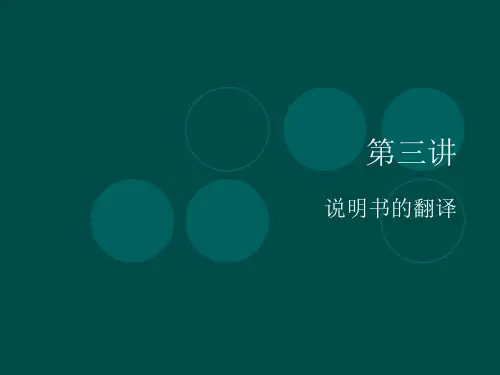
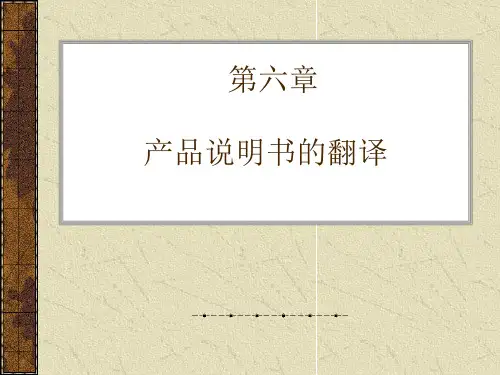
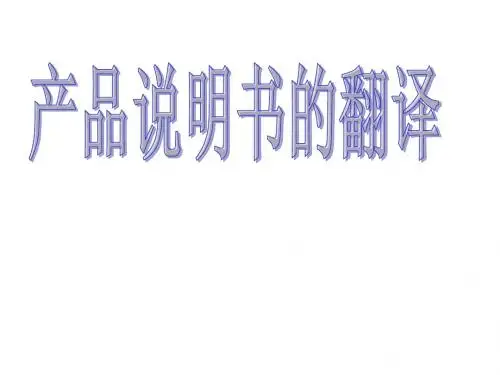
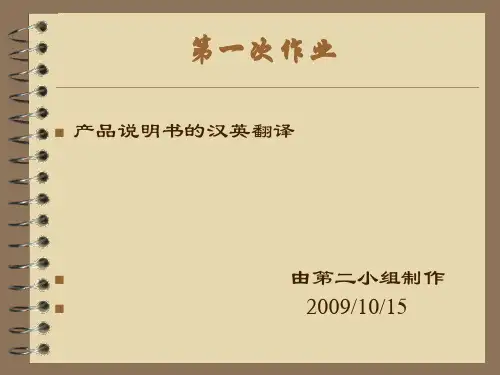



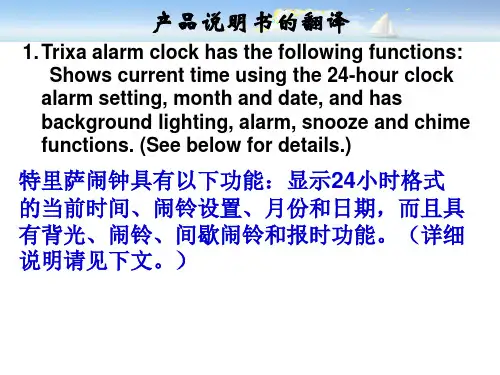
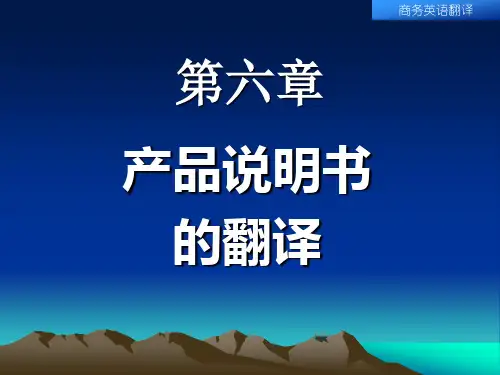
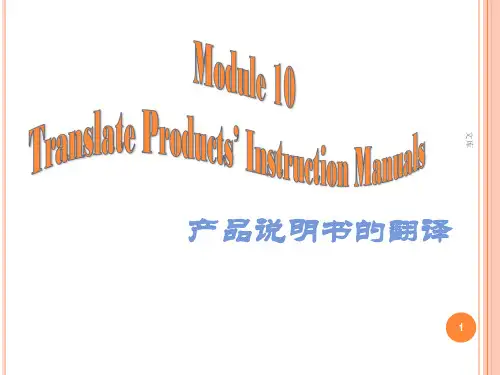
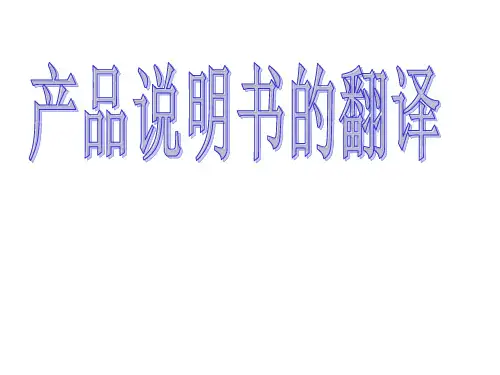
Product User Manual Translation into English IntroductionThe product user manual is an essential document that provides detailed instructions and information about a product. It serves as a guide for users, helping them understand how to use the product effectively and safely. Translating the product user manual into English is necessary for reaching a wider audience and expanding market opportunities. This document aims to provide guidelines for accurately translating the product user manual into English.Guidelines for Translating the Product User Manual1.Maintain accuracy: The translated user manual should accuratelyrepresent the content of the original manual. It should not omit or alter any information that is crucial for understanding the product.e clear and concise language: Translations should be writtenusing clear and concise language, avoiding complex sentence structures and jargon. This ensures that the instructions are easy to understand for users of varying language proficiency.3.Be consistent: Maintain consistency in terminology throughout thetranslation. Use the same translations for specific terms and phrasesconsistently to avoid confusion for the users.4.Adapt for the target audience: Consider the cultural and linguisticnuances of the target audience while translating. Certain idioms, expressions, or examples may not be relevant or understandable in the target language and may need to be adapted accordingly.5.Ensure coherence: Maintain coherence in the translation by usingcohesive devices such as transition words, pronouns, and connectors. Thishelps users follow the instructions smoothly and comprehend the content.6.Highlight warnings and precautions: Ensure that all warnings andprecautions mentioned in the original manual are accurately translated. These warnings are crucial for user safety and should be clearly stated in thetranslated version as well.7.Proofread and edit: After translating the manual, perform athorough proofreading to check for any grammatical errors, typos, orinconsistencies. Edit the translation as necessary to enhance readability and clarity.Translating Specific Sections1.Product overview: Provide a concise translation of the productoverview, highlighting its key features and functionalities.2.Installation instructions: Translate the instructions for installing theproduct accurately, making sure to include any diagrams or illustrations that aid understanding.3.Operating instructions: Translate the step-by-step operatinginstructions, ensuring that each step is clearly explained and easy to follow.4.Maintenance guidelines: Translate the maintenance guidelines,including instructions for cleaning, servicing, and storing the product correctly.5.Troubleshooting: Translate the troubleshooting section, providingsolutions to common issues or problems that users may encounter.Final Steps1.Formatting and layout: Ensure that the translated manual follows asimilar formatting and layout as the original version. Pay attention to headings, bullet points, and other formatting elements for clarity and readability.2.Review by a native English speaker: If possible, have the translatedmanual reviewed by a native English speaker to ensure accuracy and fluency in the translation.3.Provide contact information: Include contact information forcustomer support or a helpline where users can seek clarification or additional assistance if needed.Translating the product user manual into English requires attention to detail, linguistic proficiency, and the ability to convey information accurately. Following these guidelines will help ensure that the translated manual effectively serves its purpose of guiding users in the target language.。